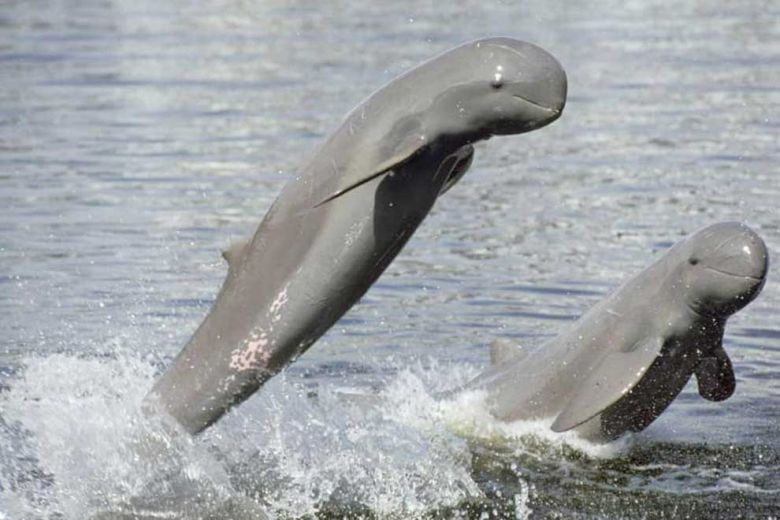June 23, 2022
PHNOM PENH – The Ministry of Environment is set to submit two of the Kingdom’s conservation areas for inclusion on the UNESCO’s World Natural Heritage list.
According to ministry secretary of state and spokesman Neth Pheaktra, they include the Phnom Tbeng Natural Heritage Park in Preah Vihear province and the Mekong Anlong Kampi Irrawaddy dolphin conservation area spanning Kratie and Stung Treng provinces.
Neth Pheaktra revealed the plans while launching the Zero Snaring Campaign in Kratie province on June 18.
He noted that as Cambodia was yet to have a UNESCO World Natural Heritage area despite a number of ancient temples listed as world cultural heritage, the ministry had received a mandate from the government to prepare the three sites for submission.
They were among five conservation areas inspected by an inter-ministerial body for potential inscription, with the other three being the Phnom Nam Lear Rock in Moldulkiri province, the Prek Prasab Wildlife Sanctuary in Kratie province and the Southern Cardamom National Park.
“We are preparing further documents on the two areas selected by the inter-ministerial body, from the five inspected, for inclusion as World Natural Heritage, with Phnom Tbeng Natural Heritage Park and Mekong Prek Kampi dolphin sanctuary boasting an abundance of wildlife.
“This includes the Irrawaddy dolphin, Mekong giant catfish, the thicklip barb, the giant freshwater stingray, deer and banteng, all of which are of unique global value,” Pheaktra said.
Putting Cambodia’s natural areas firmly on the map with inclusion on the World Natural Heritage list would bring a range of benefits, with the international interest ensuring large numbers of visitors, he added.
“The Mekong River area spanning Kratie and Stung Treng provinces is an important area with global value based on diverse resources such as Irrawaddy dolphins, fish, giant aquatic species, wild birds, deer, banteng and reindeer.
“The area also boasts flooded forest, submerged islands and a 60m deep canyon, as well as endangered birds such as the river tern [Stema aurantia], giant ibis, white-shouldered ibis, vultures and the greater adjutant,” Pheaktra said.

Irrawaddy dolphins frolic in Kratie province in 2019. WWF-CAMBODIA
There were some 800 speciesof endangered species fish, such as the giant barb, the thicklip barb (Probarbus Labeamotor), the Mekongina erythrospila, the giant freshwater stingray, the Mekong giant catfish (Pangasianodongigas), as well as the Asian giant softshell turtle (Pelochelys cantorii).
“These are the key points we are highlighting as to the incredible value of these areas, which we believe should be included on the UNESCO World Natural Heritage list,” he said.
Pheaktra called on people, particularly fishermen, not to use illegal fishing equipment and nets in protected areas to help preserve the Irrawaddy dolphins along the Mekong River, especially the 89 currently recorded in the Anlong Prek Kampi area.
The Phnom Tbeng Natural Heritage Park was established by Sub-Decree No189 dated September 13, 2016, with a total area of 25,269,41ha spanning Tbeng Meanchey, Sangkum Thmyi, Kulen and Rovieng districts of Preah Vihear province.
“There are many endangered mammals in the area, including the crowned gibbon, bears, deer, wild dogs, leopards, the Bengal slow loris, gray bats, Wroughton’s free-tailed bat – Otomops wroughtori – with many other species of wildlife said to be present,” he said.
This natural heritage area boasted breathtaking views of the forest, along with many areas of outstanding beauty, such as the Tang You, Chak Angre, Anlong Svay and Peng Preah Reouy waterfalls, he added.
Kin Narong, the owner of a restaurant at Prek Kampi dolphin sanctuary since 2008, said large numbers of national and international tourists came to enjoy the beautiful natural areas and take boat trips to see the dolphins, up to 200 per day before the Covid-19 pandemic.
He said that while the Covid-19 outbreak had drastically decreased the amount of tourists to the area, numbers were gradually returning, with around 10-20 people per day.
“Before Covid-19, my restaurant could make a profit of around 300,000-400,000 riel [$75-$100], but during the outbreak we did not have a steady income, sometimes 100,000 riel.
“I now run my business on a family scale only. I haven’t hired staff due to the low income,” Narong said.


